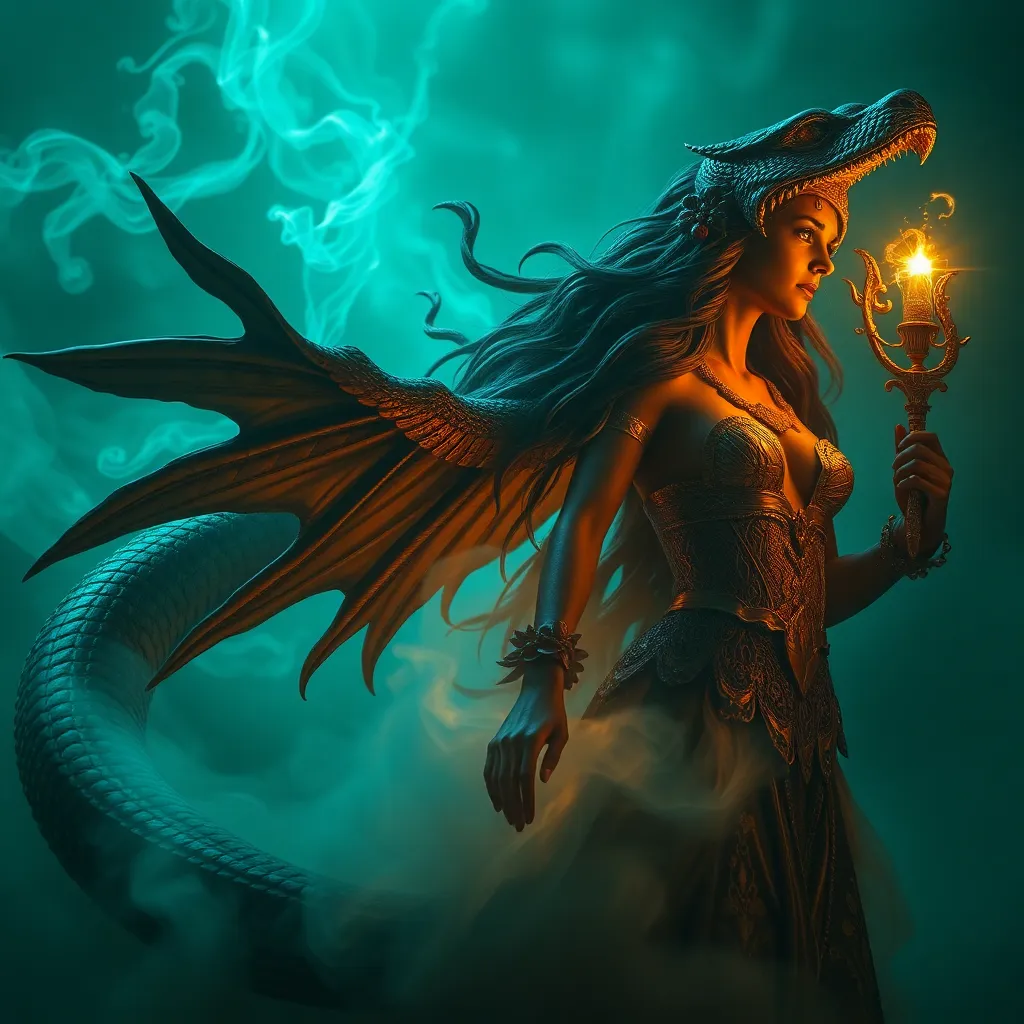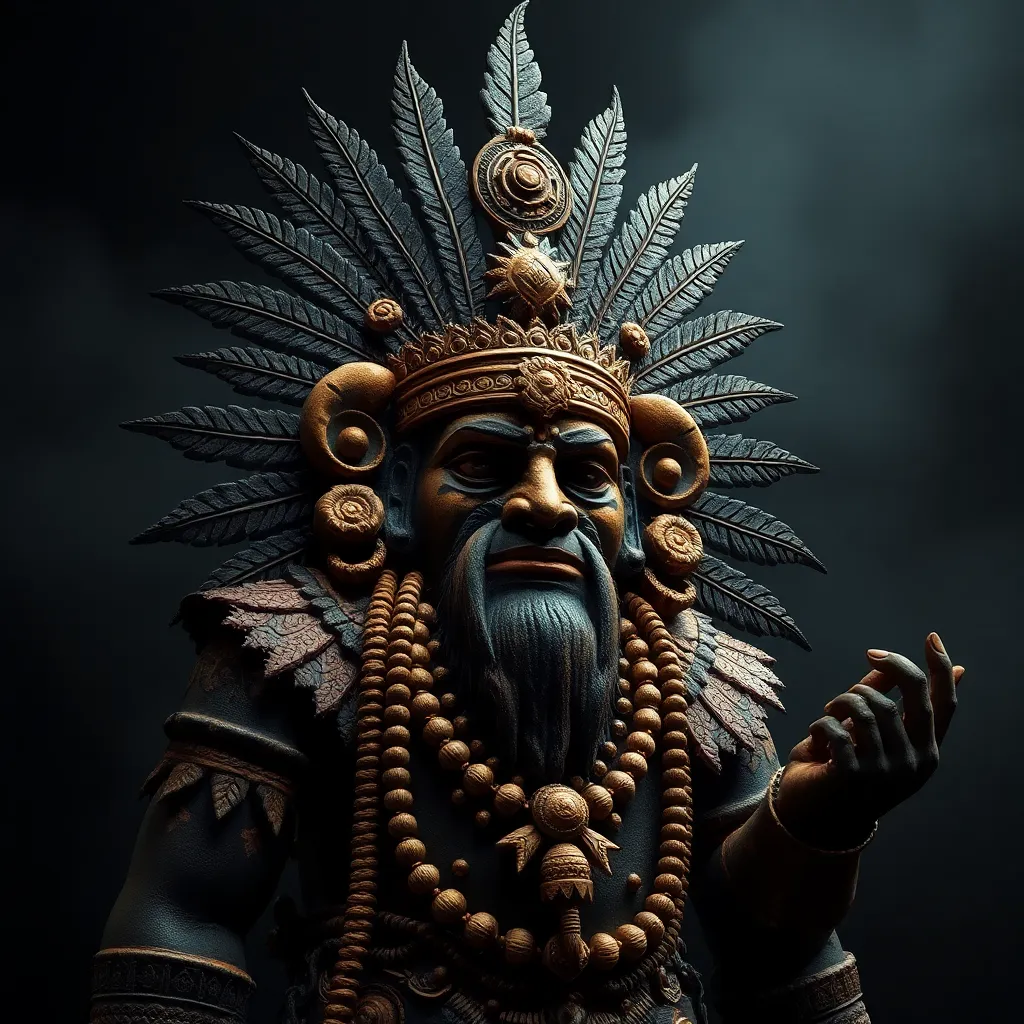Lamia and the Witch: Exploring the Overlap Between Serpent Women and Female Magic Figures
I. Introduction
The figure of Lamia, a half-woman, half-serpent creature, has fascinated scholars and storytellers alike throughout history. Simultaneously, the archetype of the witch has evolved into a potent symbol of female magic and power. Understanding Lamia and the witch reveals significant overlaps that highlight themes of femininity, danger, and transformation.
This article will explore the connection between serpent women and witch figures, examining their historical and cultural contexts, as well as their impact on modern interpretations of femininity and power. The structure of the article will follow the historical evolution of Lamia, characteristics of witches, the symbolism of serpent women, and the parallels between these two figures.
II. Historical Context of Lamia
A. Origins of the Lamia Myth in Ancient Greece
The myth of Lamia originates from ancient Greek mythology, where she was depicted as a beautiful queen of Libya who was transformed into a monster. According to myth, she was cursed by Hera, who was jealous of Lamia’s beauty and her relationship with Zeus. This transformation led Lamia to become a child-eater, a figure of fear and horror.
B. Cultural Significance and Evolution of the Lamia Figure
Throughout history, Lamia has symbolized the dangers of female desire and the consequences of defying societal norms. In various narratives, she has evolved from a mere monster to a complex character representing the struggles of women against patriarchal oppression.
C. Depictions of Lamia in Literature and Art
- In ancient texts, Lamia appears in works by writers such as Plutarch and Lucian, where her monstrosity is often emphasized.
- Renaissance art and literature revived Lamia, portraying her as a tragic figure, reflecting the fears and fascinations of women in a male-dominated society.
- Modern adaptations often reinterpret Lamia, showcasing her as a symbol of female empowerment or as an anti-heroine.
III. The Archetype of the Witch in Folklore
A. General Characteristics of Witches Across Cultures
Witches are depicted in various forms across cultures, often characterized by their knowledge of herbs, potions, and the natural world. They are frequently associated with:
- Magic and spells
- Healing and herbalism
- Feminine wisdom and intuition
B. Historical Perceptions of Witches: From Healer to Villain
Historically, witches were revered as wise women and healers but were later demonized, particularly during the witch hunts of the Middle Ages. This transformation reflects societal fears of female power:
- Witches were often seen as threats to patriarchal authority.
- Their practices were labeled as evil, leading to persecution and violence.
C. The Role of Witches in Folklore and Their Connection to Femininity
Witches embody the complexities of femininity, representing both nurturing and destructive aspects. They challenge societal norms and often exist on the fringes of society, mirroring the outsider status of many women throughout history.
IV. Symbolism of Serpent Women in Mythology
A. The Serpent as a Symbol of Transformation and Power
Serpents are powerful symbols in many cultures, representing transformation, rebirth, and wisdom. The duality of serpents—being both feared and revered—mirrors the complexities of feminine power.
B. Examples of Serpent Women in Various Mythologies
Several prominent figures in mythology embody the serpent woman archetype:
- Lamia – The Greek figure transformed into a monster.
- Medusa – A Gorgon whose gaze turns men to stone, representing female rage and power.
- Naga – Serpent beings in Hindu and Buddhist traditions, often depicted as protectors.
C. The Dual Nature of Serpent Women: Protector vs. Predator
Serpent women often embody a duality, serving as both protectors and predators. This complexity reflects the inherent contradictions within femininity, where women can be nurturing yet fierce, loving yet dangerous.
V. Parallels Between Lamia and Witches
A. Shared Themes of Seduction, Danger, and Transformation
Both Lamia and witches are characterized by their seductive qualities and the danger they pose to men and societal norms. They embody transformation—both of themselves and of others—often leading to destruction or empowerment.
B. The Archetype of the Monstrous Feminine in Both Figures
Both Lamia and witches represent the “monstrous feminine,” a concept that explores how society perceives women who defy traditional roles. These figures challenge expectations and highlight the fear of female sexuality and power.
C. Cultural Narratives That Depict Both as Outsiders
Lamia and witches are often depicted as outsiders in their respective narratives, reflecting society’s discomfort with female power. Their stories serve as cautionary tales about the consequences of deviating from societal norms.
VI. Modern Interpretations and Representations
A. Lamia and Witches in Contemporary Literature and Media
In modern literature and media, Lamia and witches are often reimagined. They can be seen as:
- Symbols of female empowerment
- Complex characters with depth and agency
B. Feminist Readings of Serpent Women and Witch Figures
Feminist interpretations of these figures emphasize their struggles against patriarchal oppression. They are often viewed as symbols of resistance and empowerment, challenging the traditional narratives that portray them as villains.
C. The Resurgence of Interest in Witchcraft and Its Connection to Female Empowerment
The modern resurgence of interest in witchcraft often intersects with feminist movements, where witchcraft is embraced as a form of female empowerment and reclaiming of power. This trend reflects a broader cultural shift towards valuing feminine wisdom and intuition.
VII. Cultural Impact and Legacy
A. How Lamia and Witch Figures Influence Modern Perceptions of Femininity and Power
The figures of Lamia and witches continue to shape modern perceptions of femininity, challenging stereotypes and encouraging a more nuanced understanding of women’s roles in society.
B. The Role of These Figures in Feminist Discourse
In feminist discourse, Lamia and witches symbolize the struggle for agency and autonomy, representing the complexities of female identity and power dynamics.
C. The Ongoing Fascination with the Archetype in Popular Culture
From films to literature, the archetype of the serpent woman and the witch remains a source of fascination in popular culture, reflecting ongoing societal interests in magic, femininity, and empowerment.
VIII. Conclusion
This exploration of Lamia and witch figures reveals significant overlaps in themes of seduction, danger, and transformation. Both figures serve as powerful symbols of femininity and challenge traditional narratives about women in mythology and folklore.
Understanding these archetypes is crucial for examining gender dynamics in mythology and contemporary society. Future research can further explore how these figures continue to evolve and influence modern perceptions of gender and power.



